UAVs in the post-Afghan era (part 2 of 3)
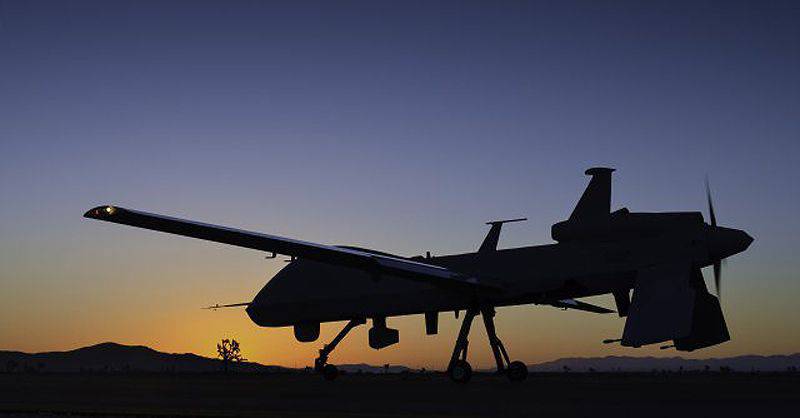
Larger view
As for roles and tasks well suited for uninhabited systems, the Comprehensive Plan for the Development of Unmanned Systems refers to the transportation of stocks to advanced areas, the supply of offshore platforms and the support of special operations forces.
One of the building blocks for such drones was to be the Darpa Transformer (TX) program shown in 2009. The TX was to be a lightly protected, four-seat, terrain-independent wheeled vehicle that could fly when needed at speeds up to 370 km/h. This craft had to have a high level of automation so that the operator did not need a pilot's license. However, the interest of the military in this drone was not very big.
In 2013, the Advanced Defense Research Directorate Darpa replaced the TX with the Ares universal / transport drone (Aerial Reconfigurable Embedded System), which could transport various modules with equipment for troops or cargo up to 1360 kg, evacuate the wounded, or perform reconnaissance tasks. Ares will perform a vertical takeoff and landing due to the use of two turn screws in the annular radome. For landing, he will need a platform two times less than for similar helicopters (although at the price of greater soil erosion). Skunk Works was chosen as a priority project, and Lockheed Martin with Piasecki Aircraft as an integrator of systems for Ares.
Several other experimental programs are underway, the goal of which is to ensure complete US domination in the field of unmanned vehicles.
The US Navy Research Laboratory recently released from the torpedo launch tube of a submerged submarine (USS Providence, SSN-719) its Experimental Fuel Cell drone XFC, which flew for several hours, broadcasting live video.
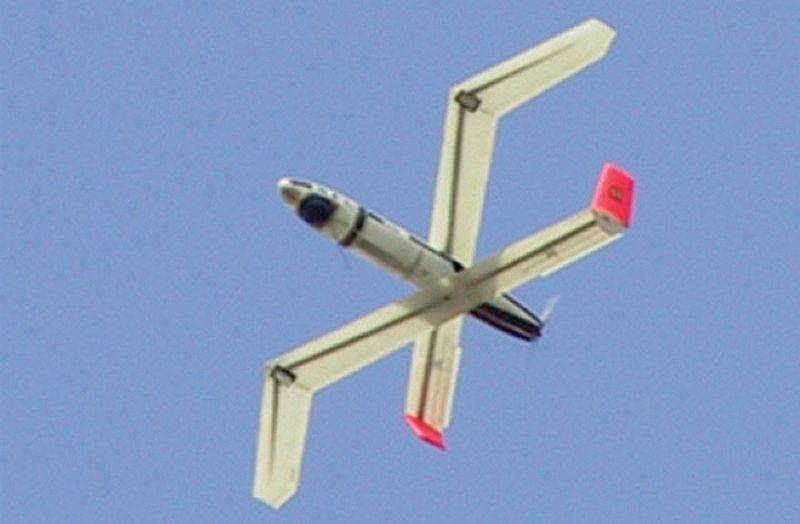
The US Navy wants to launch a reconnaissance drone from a submerged submarine. At the end of 2013, this XFC (Experimental Fuel Cell) aircraft, developed by NRL, was launched from the Providence submarine, SSN-719
The X-Plane program (vertical take-off and landing) is an attempt by Darpa to fill the gap between helicopters and fixed-wing turboprop aircraft. This Sikorsky / Lockheed Martin project, designated Unmanned Rotor Blown Wing, is one of four selected projects.
One of the leaders in the creation of vehicles with a flight duration measured in days is the Aurora Orion with Austro Engines turbo diesel engines. Drone can fly in the sky at 20 000 feet five whole days
The innovative Aurora Skate is one of several minidrons that have been successfully tested in Afghanistan. It was deployed with funding from the US Air Force Research Laboratory for use in protecting its forces.
Another potentially important development program for the Darpa naval drone control is the Tern (Tactically Exploited Reconnaissance Node) project, which aims to create a reconnaissance drone as a Predator, capable of taking off from ships of 25 tons of LCS-400 (Coastal Combat Ship) class. Darpa, having awarded preliminary contracts to AeroVironment, Aurora Flight Sciences, Carter Aviation Technologies, Maritime Applied Physics and Northrop Grumman in late 2, plans to conduct full-scale demonstrations in 2013.
In 2013, Darpa issued four 22-month Phase One contracts on its Vtol X-Plane program to create a new type (or types) of vertical takeoff and landing apparatus with enhanced capabilities. The contracts went to Sikorsky (with Lockheed Martin) to implement Unmanned Rotor Blown Wing, Aurora Flight Sciences at Lightning Strike, Boeing on their Phantom Swift and Karem Aircraft for a project, the details of which are currently not disclosed.
The Vtol X-Plane program, worth 130 million dollars and a month's 52 duration, aims to conduct demonstration flights of an aircraft with a payload of more than 2018% of its total weight of 40-4500 kg capable of flying at a cruise speed over 5443 km / h Most likely, the demonstrators will be unmanned, although (if successful) they can lead to both a manned and unmanned serial aircraft.
Another Boeing innovative project is the Phantom Eye with a wingspan of a 45,7 meter and a long flight time, which has two 2,3-liter Ford liquid turbocharged engines running on liquid hydrogen, which is contained in two spherical tanks with a 2,44 meter diameter. The current version of the 4516 kg mass should remain in flight for four days at 65 000 feet. Flight tests began in June 2012.
An alternative approach to continuous exploration and observation is presented in the Orion drone 5080 kg mass from Aurora Flight Sciences, which is equipped with two Austro Engines AE300 turbo diesel engines. Orion will have a maximum flight duration of 120 hours (five days) at 20 000 feet, range 6500 km; with a weight of 454 kg, the flight duration is reduced to 24 hours.
Orion was chosen by the United States Air Force for its Magic program (Medium Altitude Global ISR and Communications - medium-altitude global intelligence and communications), which is sponsored by the United Central Command. It has a cruising speed of 124-157 km / h and an afterburning speed of 222 km / h; the distillation range is 24 000 km. The first flight took place in August 2013. Orion has a shock potential and is capable of carrying a load of 450 kg under each wing.
US forces have spent billions on obscure small-drone projects in Afghanistan. For example, the Aurora Skate Gen-2 drone weighing one kg, shaped like a flat ingot with two turning screws on the front edges of the wings, with funding from a research laboratory of the US Air Force was deployed in small units to protect advanced bases.
In 2013 Command aviation The Navy has awarded a $ 31,3 million contract to Nasc (Navmar Applied Sciences) to supply 24 Tiger Shark drones weighing 118 kg and four ground control stations for use in its Copperhead IED countermeasures program in Afghanistan. Such programs include Speckles based on 20 kg Sensitel Silver Fox, Sand Dragon based on 100 kg Northrop Grumman Bat-12, Hawkeye based on 200 kg Schiebel S-100 and Sentinel Hawk based on 61-kg Boeing / Insitu RQ-21 Integrator base. All of this work is coordinated by Jieddo (Joint IED-Defeat Organization - an organization for the fight against improvised explosive devices).
The Boeing / Insitu drone RQ-21A Integrator returns to the USS Mesa Verde landing craft. For his "capture" uses a proprietary system of return for terminating the wings of the reputable ScanEagle
A comprehensive development plan provides for the development of manned and unmanned systems in the field of joint work, which will allow carrying out effective drone operations at large distances without entering the affected area. Although such operations are currently prohibited, the plan provides for the possibility of using unmanned systems in the 2013-2038 years in evacuating the wounded, returning human remains and rescue operations in urban environments. For American drones, tasks such as air combat, electronic warfare and the suppression of enemy air defenses are also planned. The plan considers the possibility of using drones to accurately locate ground sensors and deploy “attacking bots” to track personnel.
In the future, smaller drones will become increasingly armed as the availability of lighter rockets, such as Spike optic-electronic missile guidance systems with 2,5 kg, developed by the Center for Aviation and Naval Operations in collaboration with the DRS Technologies and 13-kg missiles with laser guided by lahat from IAI. Other weapons in the 13-15 kg category include APKWS from BAE Systems and Dagr from Lockheed Martin, General Dynamics’s Hydra-70 rocket versions are under control. At the lower end of the line, there is a Switchblade from AeroVironment that launches one-kilometer locking ammunition weighing one kg with control through an optical channel and a flight time of up to 40 minutes.
In the future, the size of warheads will become less and less, and power will be more and more due to the use of nanoparticles, which have a proportionately larger surface area and therefore more actively interact with other chemicals in explosive material. The result is a higher reaction rate and more powerful detonation. The US Air Force is studying techniques that will increase the amount of nano-aluminum powder in an explosive (or throwing) mixture.
Blasts from the past
The Department of Defense is seriously interested in shock drones, similar to those first proposed by the Israelis with their drone Harpy. Previously known as weapon "Air defense suppression", it is currently renamed by the Pentagon in the "air dominance system." This category included the Raytheon Nlos-LS Pam vertical launch rocket (Non-Line-Of-Sight Launch System, Precision Attack Missile - launch complex in the indirect visibility zone, high-precision rocket), but the program for this weapon with a radius of 40 km was stopped after development was completed at the end of 2010 of the year.
However, from the Comprehensive Plan it is clear that the Pam project must be reborn and be deployed by the US Army for use against fixed and mobile armored vehicles. The US Navy plans to use Pam on LCS (Littoral Combat Ship) coastal warships and USV (Unmanned Surface Vehicle) automatic surface vehicles in order to defeat such threats as, for example, small attacking ships.
The US Air Force is considering various concepts of air dominance, including the AFRL / Lockheed Martin Locaas (Low-Cost Autonomous Attack System) in the 45-kg mass category; This very successful technology demonstration program was completed in 2005. The concept has recently been revised to include a person in the chain in order to retarget the drone in flight and cancel the attack.
In the future, Lockheed Martin will develop a launch vehicle of four Locaas under the designation Smacm (Surveilling Miniature Attack Cruise Missile - a miniature attacking cruise observation rocket). Smacm with a turbojet engine will be installed inside existing fighters with low visibility and promising combat drones. It will provide targeting, surveillance and communications within a radius of more than 450 km.
As for the drone propulsion systems, the Integrated Plan defines as the medium-term objectives the introduction of turbofan engines, variable cycle engines and hybrid turboelectric systems. In the long term, it is planned to introduce fuel cells using non-hydrocarbon fuel.
A significant technological breakthrough will be the introduction of optical communications, especially in the context of high-altitude drones. This will significantly expand the range of operating frequencies and increase resistance to interference, although the narrow beam width of such systems creates a problem associated with maintaining high accuracy. In the recent Darpa program, hybrid optical / radio frequency air-to-air communication channels were successfully demonstrated at distances greater than 200 km.

The MQ-1C Gray Eagle of the US Army differs from the MQ-1B Predator drone of the US Air Force with its heavy fuel engine, Sar / Gmti radar (selection of ground moving targets), relay capabilities, increased fire power and tactical communication channel
More technology
In terms of navigation, considerable effort is being made to improve GPS, make it available for more platforms, minimize susceptibility to jamming and develop alternatives used in the presence of jamming. A militarized version of the M-code GPS system will be available soon, and starting from 2017, it will be included in all new programs of the US Department of Defense.
The Darpa project on the PINS (Precision Inertial Navigation System) high-precision inertial navigation system uses an ultracold atomic interferometer to obtain a noise-tolerant and near-GPS accuracy system for advanced military platforms. Tests on a manned vessel were to begin in the 2013 year. According to the High Dynamic Range Atom (HiDRA) program, an inertial measurement unit is being developed with the rate of departure of parameters for the entire 20 meters / hour in a high-mobility vehicle.
The achievement of greater autonomy of unmanned systems has been given the highest priority, it is viewed as "a critical factor for future conflicts in which technology will fight and win." Two important aspects here are the autonomous operations of prospective US Navy drones on the ship deck and onboard systems for detecting and preventing airborne collisions that will require new sensors.
The main factors in obtaining approval for the transfer of any unmanned vehicle to the national airspace management system are airworthiness and the use of a system for detecting and preventing airborne collisions that comply with civilian requirements.
As for the American Army's General Atomics MQ-1C Gray Eagle, the device is certified according to its own TAA (Technical Airworthiness Authority) technical standard, since the cost of certification for manned vehicles was extremely high. Thus, each transition to a national airspace organization system requires a certificate or regulation and monitoring of the airspace by ground-based radar to prevent airborne collisions of potentially conflicting air traffic.
It must be said that since July 2013, General Atomics has been testing the Improved Gray Eagle with improvements in payload and fuel tank capacity. The drone was equipped with the Lycoming DEL-120 engine with a power of 153 kW instead of the Centurion 1.7 engine with a power of 123 kW, which made it possible to increase the duration of the flight in an unarmed configuration to more than 50 hours.
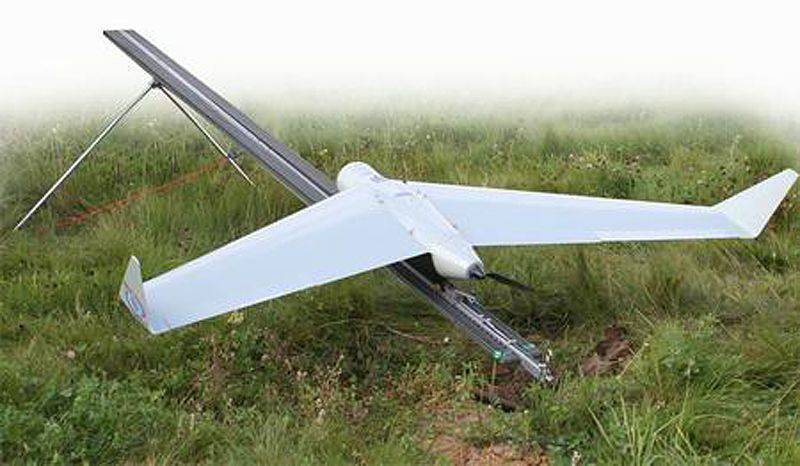
The tactical reconnaissance drone Irkut-10 is launched with a catapult from a short rail and returned with a parachute. Ten systems were sold to Kazakhstan, and in Belarus Irkut-10 is manufactured under license
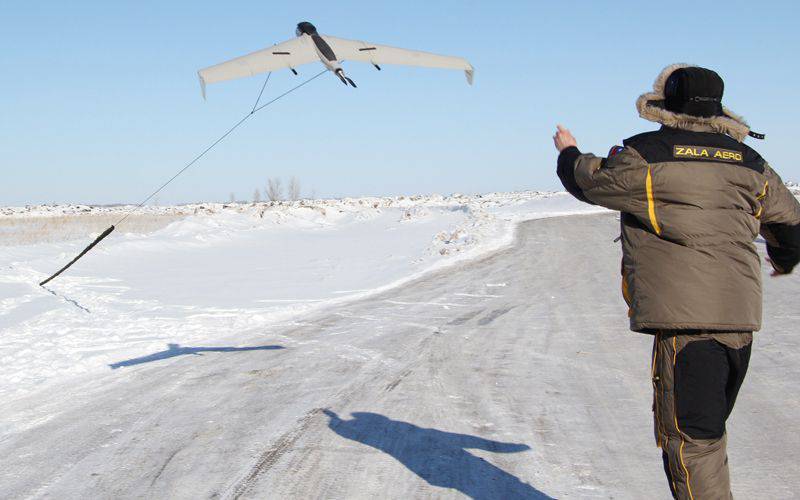
One of the Russian leaders in the minidron category is the Izhevsk company of Zala Aero. Among the users of this 421-16EM Hall is the Ministry of the Interior of the Russian Federation
Hall 421-22 is able to continue the task even if one of the eight engines fail. He was involved by the Russian Interior Ministry to ensure the safety of the Winter Olympic Games in Sochi
Russia
America has undoubtedly won global leadership in the entire spectrum of drones. Even if Russia (which currently has all 500 military drone drills) is jealous of America’s leadership, it should be comforted by the fact that this leadership was achieved inefficiently and for huge money. Some of the key products were mainly the fact that manufacturers wanted to produce, they were hastily purchased outside the carefully planned supply process, which was one of the main contributions of the Pentagon to the post-war development of the airspace. Many of these drones are very dependent on the action scenario, some may be outdated.
In addition, duplication of work in America has been criticized for a long time. The latest report said that four types of US troops are currently developing 15 different airborne platforms and 42 different sensory kits.
In the Soviet Union, several military drones were developed, and the supersonic, non-returnable Tu-123 Hawk weighing 35 600 kg created in 1964 was highlighted here. It was followed by much smaller subsonic 6215-kg Tu-141 Swift and 1230-kg Tu-143 Reis; 950 units were manufactured and entered service in 1976 year. At the end of the 80, an improved Tu-243 Race-D followed. According to some sources, its operator is North Korea. The 138-kg Bee-1 company Yakovlev was an element of the tactical reconnaissance system Stroy-P, which entered service with the Russian army in 1995 year and was used in the first Chechen war.
Subsequently, unmanned aircraft complexes were removed from the list of Russian priorities, but, nevertheless, the Vega / Ray 9M62 drone weighing 70 kg, the Tipchak 1K133 air element (designed to replace Bees / Stroy-P) was limitedly used in a conflict with Georgia in XNXX . Tipchak had several flaws and serious technical problems. Georgia had better intelligence capabilities because it exploited Hermes 2008 drones weighing 450 kg from Elbit Systems.
Russia unsuccessfully tried to buy an 1250-kg UAI HeronI drone, but the deal did not take place, possibly due to US pressure on Israel. However, in April 2009 of the year (presumably after Russia gave Israel guarantees that it would not sell C-300 air defense systems to Iran), a contract was signed between Rosoboronexport and the Israeli company IAI, involving the purchase of twelve 5,6-kg Bird Eye and four 400 -kg Searcher II. The second contract (possibly in the same quantity) was signed at the end of the year, bringing the total cost to more than 426 million dollars.
Russia also reportedly abandoned its plans to buy the I-View Mk160 150-kg, as Australia had previously done, abandoning the purchase of the I-View Mk250 250-kg in the 2008 year. The I-View series is no longer on the market; its role has shifted to later projects, such as the 12-kg mini-Panther drone with rotary screws for vertical take-off, which can be launched from a position much closer to the target area.
In 2010, a contract worth 400 million dollars was signed between Oboronprom (its subsidiary Rosvertol) and IAI, giving the right to assemble Bird Eye 400 and Searcher II drone units at the Ural Works of Civil Aviation (UWCA) plant in Yekaterinburg. In 2011, the Russian Ministry of Defense issued an order to UWCA, which includes about 40 million dollars for the production of 27 Bird Eye 400 under the designation Zastava and 270 million dollars for ten Searcher II drones under Outpost. (This number probably refers to complete systems).
Since a production license was purchased, the Zastava drone is most likely manufactured not only for the Russian army, but also for the Airborne Forces, the FSB, the Interior Ministry and the Emergencies Ministry.
Russian models
In 2010, the Russian army conducted a series of tests in order to compare local drones in the classes “mini” (25 km) and short-range (100 km). Initially, the companies presented 12 22 different apparatus, which fell in the second stage to the drones 8: 7,0-kg Orlan-3M and 14,0-10 kg Orlan-production of special technological center Vega, 5,3-kg T23 Aileron-3 and 15,5-kg T10E Eleron- 10 from Enix, Spy-2 from Izhmash and 2,5-kg. Dragonfly 421-08 and 4,5-kg. Swallow 421-04M from Zala Aero.
At the end of 2013 of the year, the Russian Ministry of Defense issued an order worth $ 3 million to the Kazan company Enix for the supply of 17 complexes with 34 drones Aileron-3CB. In 2012, the order for the 250-kg Corsair Vega / Beam followed, which apparently satisfies the requirement in the 100 km range. In the intermediate category, Enix is developing the 68-kg T92M, but it has not yet been ordered.
In 2013, the Air Force Academy in Voronezh began to get 18-kg Orlan-10 from the Vega Special Technology Center in St. Petersburg. Deliveries to the Academy of the UAV Outpost were to begin in 2014 year.
It is assumed that other Russian-ordered drones include the 421-04M Aero Hall, which is operated by the Ministry of Internal Affairs, as well as the 10-kg of the 421-16E Hall. Kazakhstan is the operator of 3-kg Irkut-2M and 8,5-kg Irkut-10. The latter is manufactured in Belarus under license.
In the Airborne Forces tested 1,3-kg T-4 production of the Omsk radio plant named after Popov. 90-kg Dozor-4 from Transas was actively proposed for the FSB Border Guard. The company "Horizon" from Rostov-on-Don has a license to assemble the Schiebel S-100 helicopter and expects to deliver it to the border troops, the Ministry of Emergency Situations and the Ministry of Internal Affairs. Horizon Air S-100 was used along with 421 Hall to ensure the safety of the Olympic Games in Sochi.
Kamov (currently part of Russian Helicopters) was among the leaders in Russia with its Ka-250 37-kg, which first took off in the 1993 year and was followed by the Ka-280 137-kg in the 1998 year. In 2010, Russian Helicopters presented models of three new projects, 300-kg Ka-135, 600-kg Ka-175 Kite and 3000-kg Albatross. All have an opposite propeller scheme and will be ready to fly by 2017.
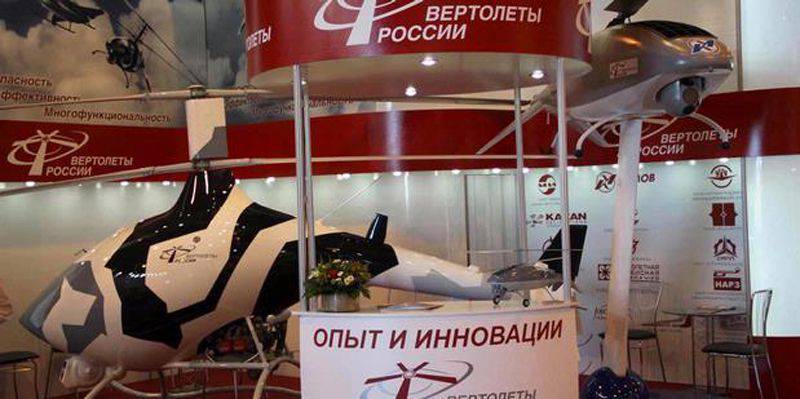
A rare look at the development prospects of the Russian unmanned helicopter was presented at an exhibition in Zhukovsky in 2010 year. There were exhibited models 700-kg Ka-175 Kite (left), 300-kg Ka-135 (top right) and 3000-kg Albatross, all of them are now all classified
In order to improve development in the field of drones, Russia began programs in three weight categories in the 2011 year: the one-color Pacer, the 4,5-ton Altius-M and the 15-ton Hunter. Reportedly, these projects are led by Transas, Sokol and the United Aviation Corporation (UAC) respectively.
The most interesting projects are the 15-ton Hunter of the “sixth generation”, for which 600 million dollars have been allocated and in which the Sukhoi company, RAC MiG (and possibly the Tupolev company) participate. The project was based on the 10-ton Scat project from RAC "MiG", the layout of which was shown in the 2007 year.
Altius-M grade 4,5 tons is the subject of a contract worth 35 million dollars; Apparently, the purpose of its creation is to compete with the General Atomics MQ-9 Reaper turboprop. In order to extend the service life, it will have two A03 RED Aircraft diesel engines rated at 373-kW. Pacer (Orion) weighing one ton, under which the contract for 29 million dollars was signed in 2011 year, will be in a broad sense equivalent to a drone General Atomics MQ-1 Predator. If the two larger drons are long-term research projects, Pacemaker production is expected to begin in 2018.
The Russian defense minister recently said that 2020 billions of dollars would be spent on the purchase of new drones before 370.
The Casc Rainbow-3 or CH-3 ISR front-impact drone drone with a 630 kg mass is supposed to be inspired by GIDS’s Pakistani 480-kg Shahpar
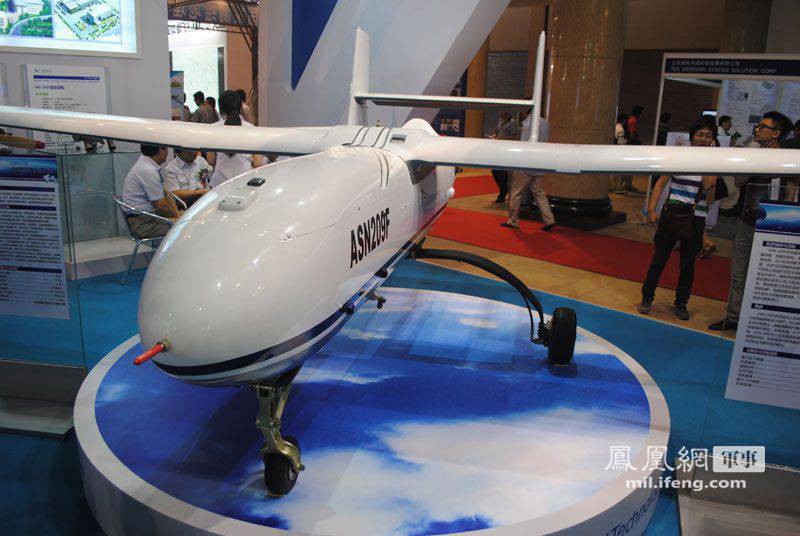
Drones created by Northwestern Polytechnic University (NWPU), until recently dominated the market of Chinese tactical drones. One example is the ASN-320 Silver Eagle 209-kg, which is in service with the Chinese Navy.
China
For many years, Northwestern Polytechnic University (NWPU) has dominated the creation of Chinese drones; its products are offered through the company ASN Technology Group. She produced over 40 drones in four series and has so far delivered more than 1500 airborne vehicles and has filled over 90% of the local market. To launch the so-called tactical drones, the army mainly uses rail installations on trucks, and returns them using a parachute.
The ground forces use several options of the ASN-206 drone launched from the cargo platform, including the ASN-207 (can be recognized by the mushroom-shaped upper antenna) and ASN-215. The most recent developments of ASN Technology Group include the 320 kg ASN-209 Silver Eagle, which was put into service fleet in 2011 and according to media reports, it is manufactured under license in Egypt, as well as an 800-kg ASN-229A apparatus.
Another leader was Beihansky University, its full name was Peking University of Aviation and Cosmonautics. At one time, he began the reverse engineering of the Ryan AQM-34N drone (Model 147H) Firebee with a large wingspan (9,75 meter); several such devices were lost by the USAF in the sky over Vietnam in the period from 1967 to 1971 a year. The resulting 1135-kg WZ-5 entered service with the Chinese army in 1981 year and was exported under the designation CH-1.
China stepped up drone operations in 1999, right after it, several NATO armies successfully used drones in operations over Kosovo and Serbia. Later, developments in the field of UAVs were reinforced by the fact that, in contrast to Western attack drone aircraft, drones provide China with reliable means of delivering cruise and ballistic missiles to aircraft carriers of the American fleet.
Beihan University recently manufactured a medium-height drone BZK-005 weighing 1200 kg with a long duration of flight due to the pushing two-bladed propeller. Presumably BZK-005 Predator / Heron class is in service with the Chinese fleet. In September 2013, the Japanese fighter spotted a BZK-005 near Okinawa Island.
Chinese drone Yi Long / Wing Loong or Pterodactyl-1 (looks like a Predator) with 1150-kg mass, created by AVIC / Chengdu, took off for the first time in 2007 and received an export permit for 2009. It is reported that it was sold to five countries, including Saudi Arabia, the United Arab Emirates and Uzbekistan. China agreed to sell the armed drones to Pakistan, which the United States refused.
The international debut of the U8E helipadron weighing 220 kg from Changhe Aircraft Industries (CAIC) was held at the Dubai Airshow in 2013, but its advantages were questioned due to the fact that the Chinese fleet is armed with Schiebel S-100 helipad
The Wing Loong drone was preceded by the CH-3 UAV with a front tail weighing 630 kg, developed by the 11th CASC Academy (China Aerospace Science & Technology Corp), or the China Aerospace Science and Technology Corporation (CAAA). The CH-3 took off in 2004 and, like Wing Loong, has two weapon suspension pylons.
CAAA also developed the 1350 kg CH-4 or Sky Saker, which also resembles the Predator project, but has four pylons for armament. The CH-4 is reportedly in service with the Chinese army and is currently being evaluated by Algeria, where two vehicles were wrecked.
Recent CH series products include the 110-kg drone CH-91, which has a two-bladed configuration with an inverted V-tail, 300-kg CH-92 and 18-kg CH-803. Launched from the transport and launch container 9-kg drone CH-901, designed for special forces and can be used for reconnaissance or as a winged grenade. It has a solid wing with variable sweep, the tail surfaces are folded forward into the body.
As regards the jet drones of the widespread Global Hawk configuration, the AVIC / Guizhou 1700-kg WZ-2000 flew for the first time at the end of the 2003 year. It is assumed that Chengdu Sky Wing Three belongs to the class 7 tons; he was spotted during taxiway tests in the 2008 year. It is expected that at its base a larger Long Haul Eagle drone will be developed in the 14 tons category.
China Aerospace Science & Industry Corp (CASIC) has developed the HW-100 Sparrow Hawk, HW-200 Ascender and HW-300 Blade drones through its Third Academy division. The newest known project is the HW-600 Sky Eagle, which was designated the WJ-600 in its impact version. Third Academy specializes in cruise missiles, so it's no surprise that the HW-600 looks like a Boeing AGM-86 air-launched cruise missile with a rigid wing. In an animated film shown at the 2010 Zhuhai Airshow, this truck-launched WJ-600 fired missiles at ground vehicles and provided ship targeting data for rockets and cruise missiles.
Having set a goal to reach for the reconnaissance drone of extreme flight duration and range, Chengdu and Guizhou corporations adopted an Xiang Long drone (flying lizard) 7500 kg articulated wing tandem scheme, which made its first flight in 2009 year.
At the top of the technological hierarchy is the unobtrusive Lijian combat drone (sharp sword), designed by Shenyang and manufactured by Hongdu, which in appearance is similar to the X-47B. Apparently, it is designed for the Chinese Air Force and Navy, mainly to provide air access to the South China Sea. The first flight was made in November 2013. The commercial illustrates its use from an aircraft carrier.
In 1994, China purchased a batch of truck-launched 135-kg drone from IAI worth 55 million dollars from a truck and recently developed its own variants with various homing heads. China also bought a Vulture artillery support system from ATE, a South African company. In 2010, 18 Schiebel S-100 helicopters weighing 200-kg were purchased for service in the Chinese fleet. At the beginning of 2014, CybAero announced a contract worth 5,5 million euros to sell Apid-60 180 kg drones to China for use with ships.
South Korea has developed several drones for military and civilian use, including this X-NUMX-kg Remo-H from Sunwung Engineering, which is likely to go into service with the South Korean army.
An unarmed version of General Atomics Predator XP is offered for export. At the beginning of 2013, it was announced that the United Arab Emirates had signed a contract worth 200 million dollars for an unnamed number of these drones
Asian-Pacific area
Despite the commercial success of Yamaha Motor with helicopters for spraying 67-kg R50 and 94-kg Rmax crops (the latter was deployed by the Japanese contingent in Iraq in 2005 and in Afghanistan in 2007), little attention was paid to developing their own military drones. However, as mentioned earlier, Rmax was used by Northrop Grumman as a base for developing the R-Bat surveillance drone.
The US Air Force deployed two 14,6-ton RQ-4 Global Hawk from Northrop Grumman at Misawa airbase in northern Japan in May 2014; in the Japanese army they hope in 2015 to exploit one of these devices together with the Americans. The 2014 ––––––––––––––––––––––––––––––––––––––––––––––––––––––––––––––––––––––––––––––––––– The 2018 ––––––––––––––––––––––––––––––––––––––––––––––––––––––––––––––––––––––––––––––––––––––––––––––––––––––––––––––––––––––––––––––––––––––––––––––––––––––––––––––––– O-They will also have special infrared sensors installed to detect ballistic missile launches. (In February, 2014, the Australian Minister of Defense recommended the purchase of seven RQ-4C drones).
South Korea plans to sign a contract for four Global Hawk Block 30 before the end of 2014. But the Elbit Skylark II 65-kg and the IAI Harpy anti-radiation drone are already in service with the South Korean army.
Korea Aerospace Industries (KAI) is responsible for most of the development of local drones, especially for the 290-kg RQ-101 Night Intruder 300 corps level, which entered service with the South Korean army (after operating a small number of IAI Searcher). KAI was recently selected to develop a drone that will replace the RQ-101; Its entry into service will begin around 2020. It will be equipped with an AWSS (Airborne Weapon Surveillance System) US armament surveillance system with an infra-red homing head, which will detect the launch of artillery rockets.
Another KAI project is the Devil Killer drone 25-kg, which took off for the first time in 2011. In 2010, Korean Air Aerospace Division (KAL-ASD) was awarded a contract worth 30 million for the development of a KUS-11 drone division.
The development of drones in Taiwan is mainly conducted by the Chung-Shan Science and Technology Institute, whose tactical apparatus Chung Shyang II entered service in the 2011 year. Approximately 32 drons are currently in service with the army of Taiwan. This institute has also developed a manual launch 2,1-kg drone Cardinal II.
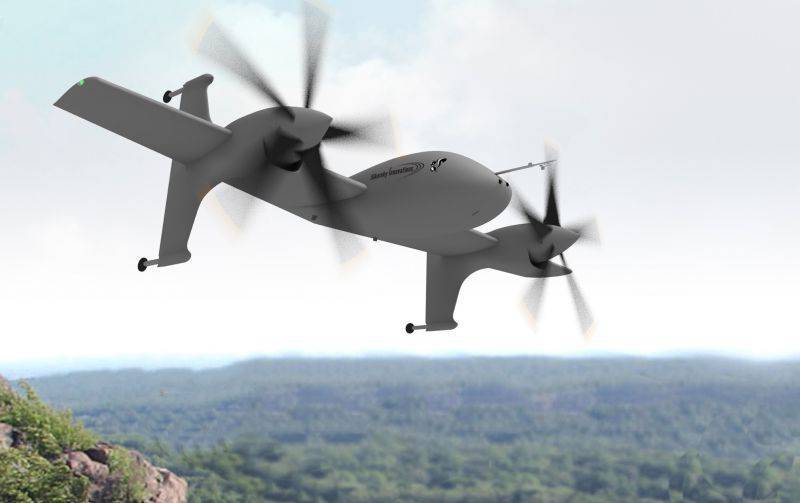
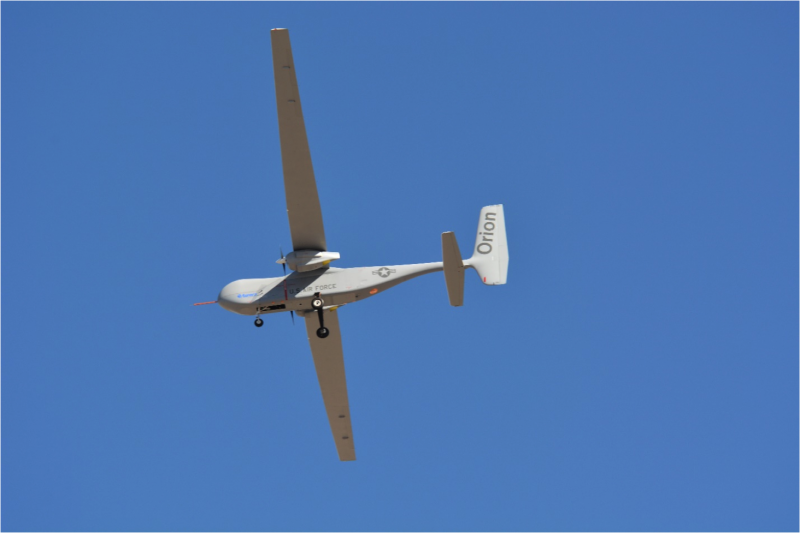
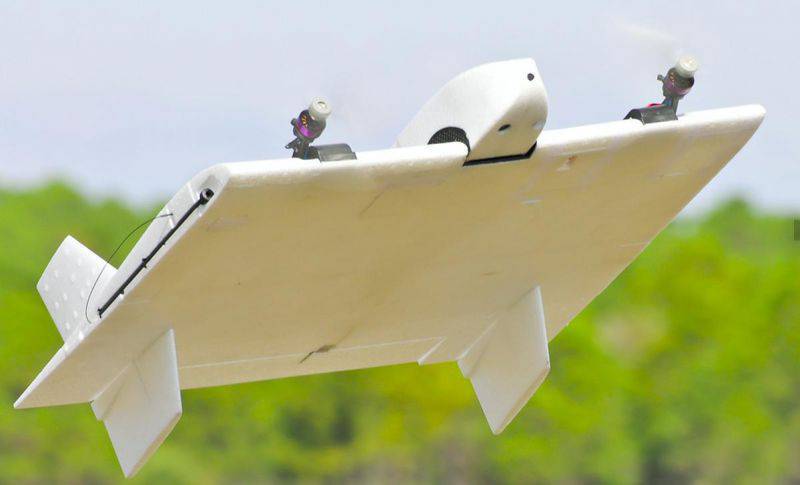
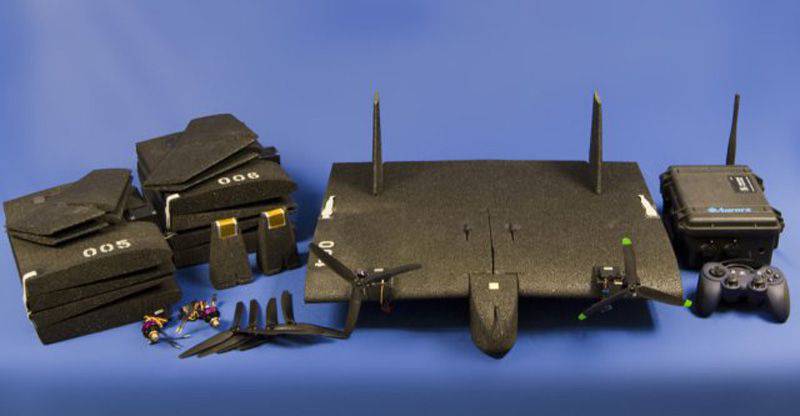
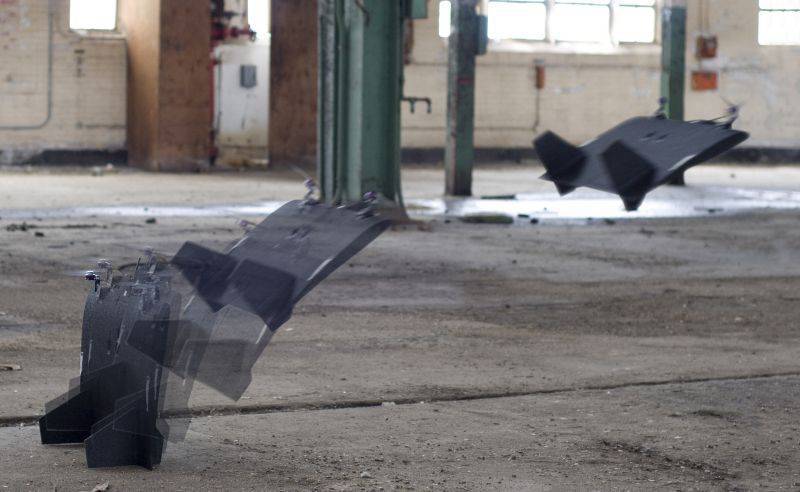
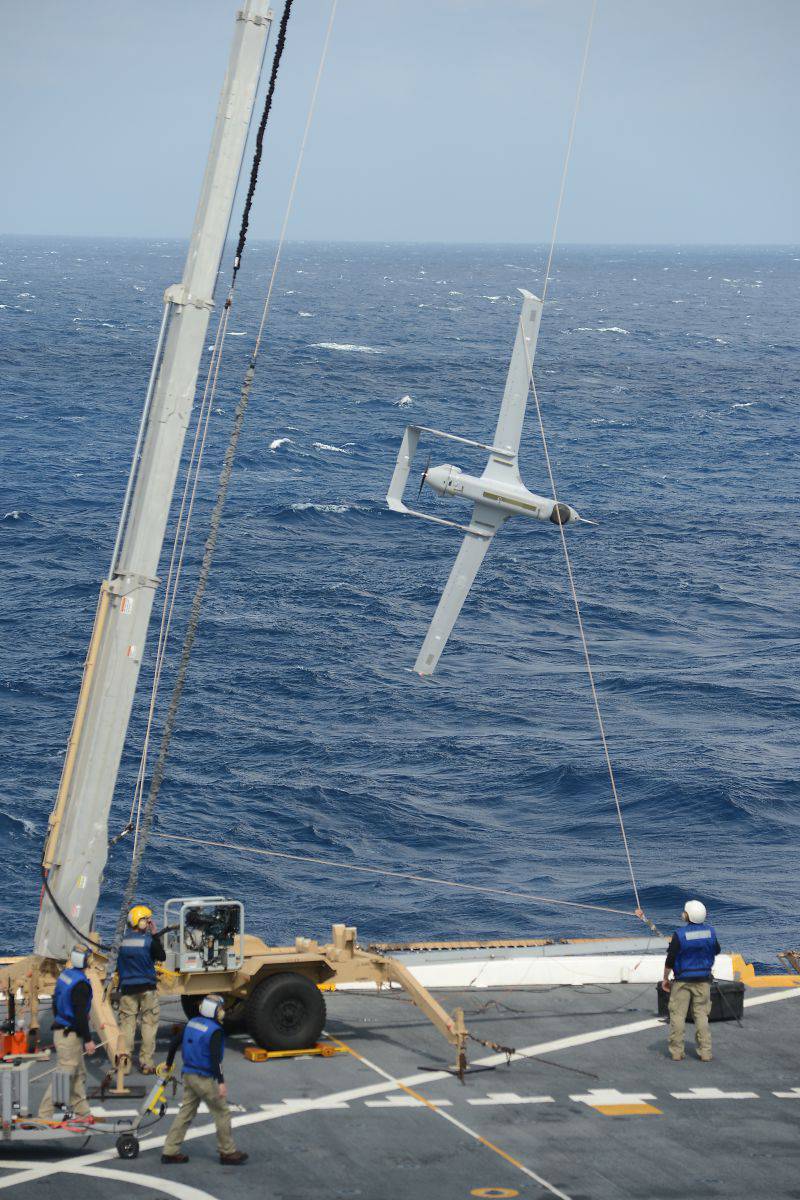
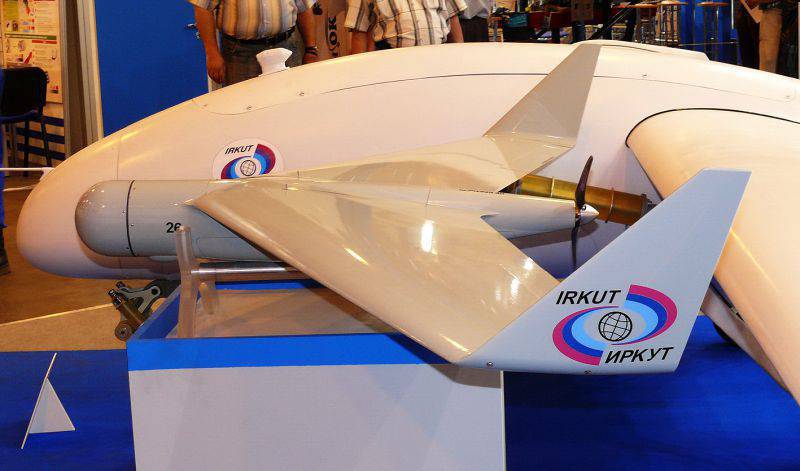
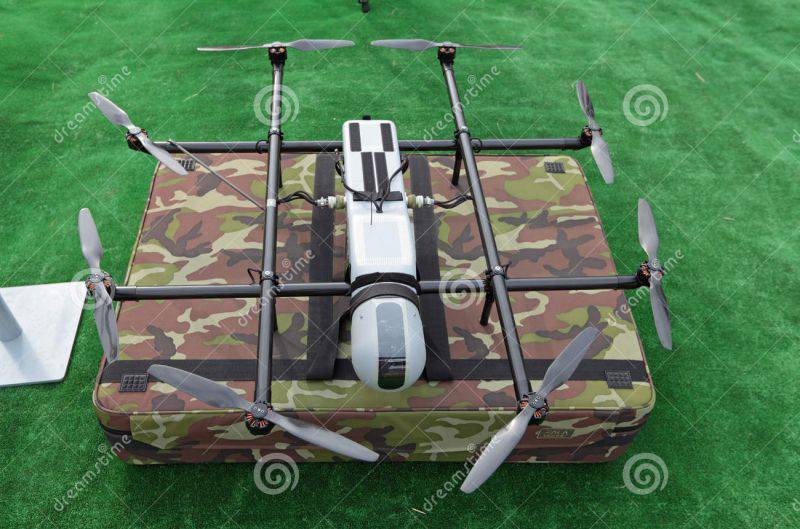
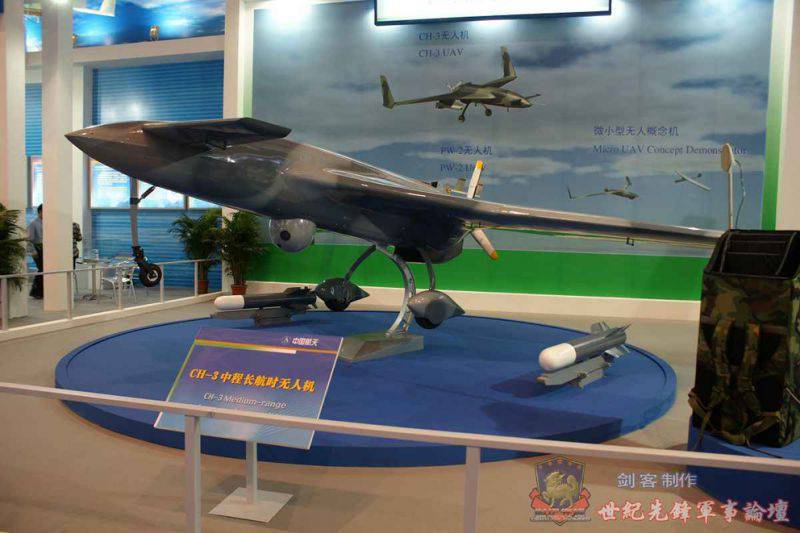
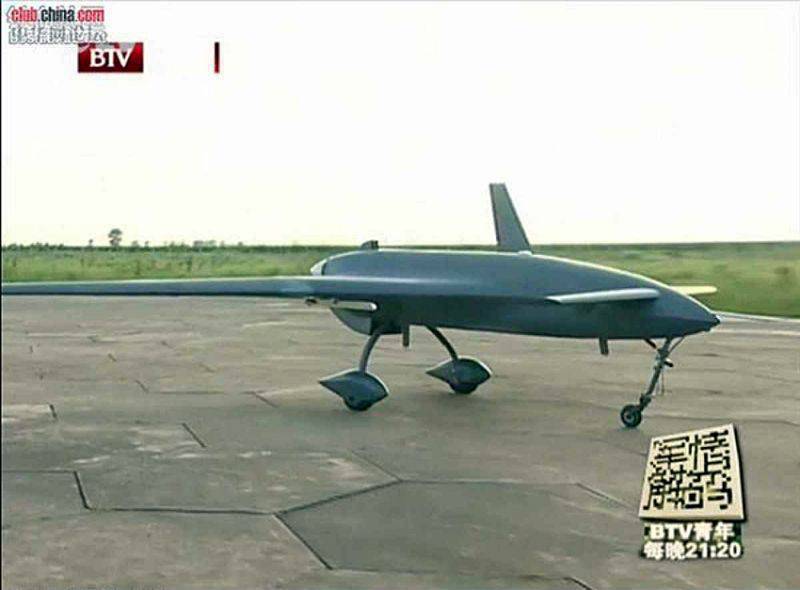
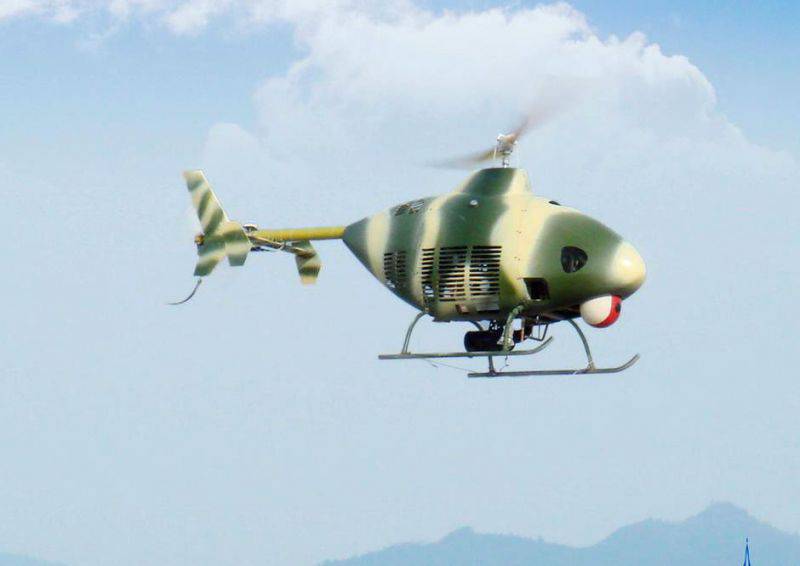
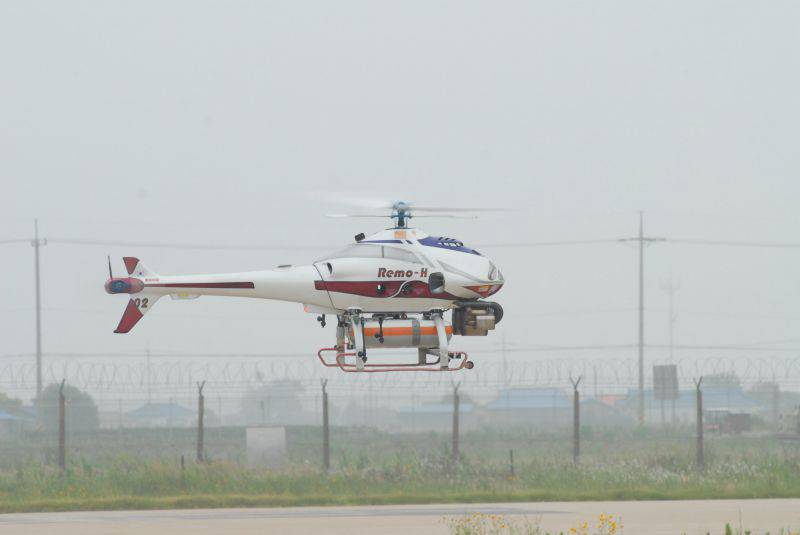
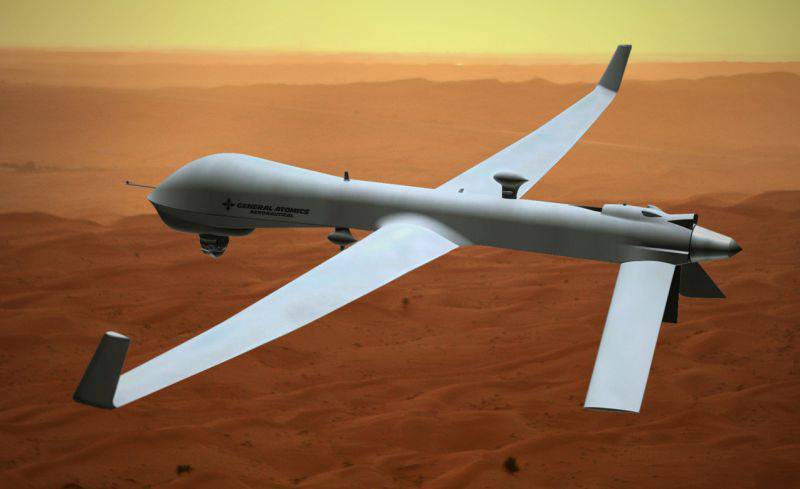
Information